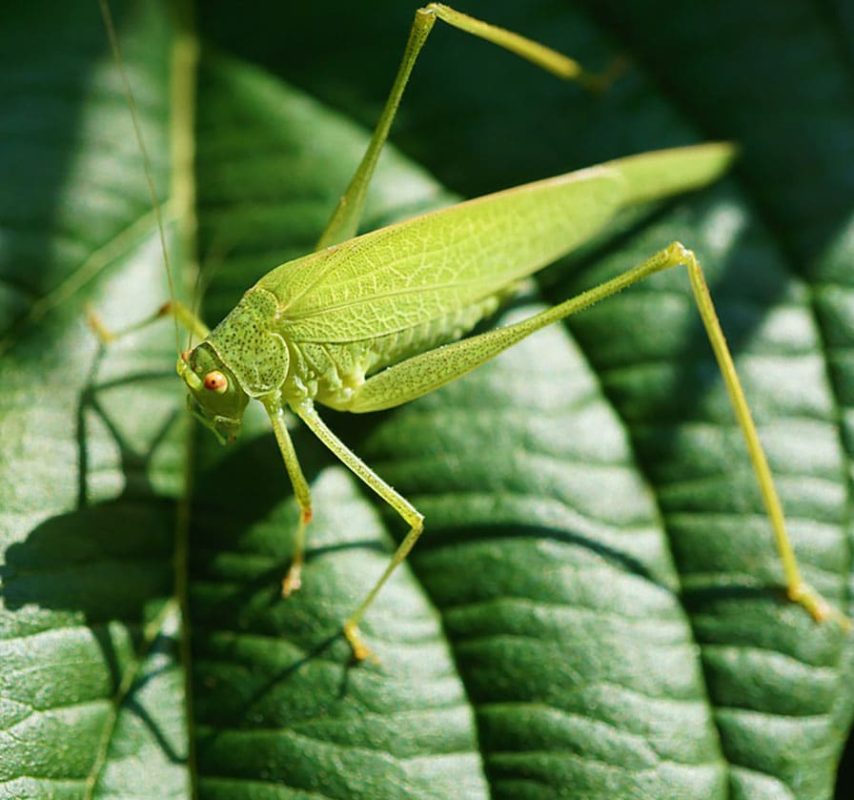Grasshoppers are one of the summer pests that cause exasperation in gardeners as they can level your plants in record time. Dating back to the early Triassic period, about 250 million years ago, they’ve been around for ages and have developed quite the survival system so if you have an infestation, they can be tricky to control or eliminate.
There are a couple of ways to deal with an infestation. If you are looking for an organic way to control them, try attracting birds, snakes, or praying mantids all of which feed on grasshoppers. Since grasshopper eggs over winter in the soil, you can try tilling the soil in mid summer and again in the fall and early spring to eliminate any eggs that might have been laid.
Keep weeds at bay in order to limit the supply of available food. If your garden is close to a pasture or meadow, try mowing or tilling a strip about six feet wide around it to keep them at length. If you have ever thought about keeping chickens, now would be a good time to start because chickens, ducks, and geese love eating grasshoppers. As few as two or three birds will work well to effectively control grasshopper populations.
Unfortunately the best product, Nolo Bait, isn’t available this year. Their factory in Durango burned down a couple of years ago and they are working to rebuild their supplies. Nolo Bait is a biological insecticide containing a naturally occurring spore called Nosema locustae that infects grasshoppers. Young grasshoppers are attracted to wheat bran flakes so they use that as the carrier. Once ingested, the disease that the spores carries is activated and it works to kill them, thereby suppressing the population. It’s especially effective when used on young grasshoppers which is why it’s important to get it out early in the season before they grow into adults. Keep this product in the back of your mind when it’s available next year.
The next best line of defense is a product called Eight. Eight is Bonide’s answer to the gardener’s old friend Sevin and it’s available as either a dust or in a granular form but the active ingredient is different in each of those products. Eight dust’s active ingredient is permethrin but Eight granules active ingredient is bifenthrin. Both are part of the pyrethroid family of insecticides which are synthetic pesticides formulated to copy pyrethrins that are a naturally occurring pesticide chemical found in chrysanthemum flowers. So what’s the difference?
Permethrin acts faster on grasshoppers and insects that come in contact with this dust will show signs of paralysis quickly. Permethrin’s effects are shorter term and it only remains active for up to about 30 days in your garden as sunlight and soil microorganisms work to break it down fast. So if you want an immediate kill but are willing to reapply it more often, choose the dust.
If you use the Eight granules that contain bifenthrin as their active ingredient, it will take a bit longer for you to see any noticeable effect on baby insects and even longer for the adults. However, Bifenthrin has a far longer residual effect and can be effective for up to 90 days in your yard and garden. If you don’t care about how quickly it acts but don’t want to have to be out reapplying it through the summer months, choose the granules.
Plagues of locusts were mentioned in Biblical times as causing famines then, so take heart because you aren’t the only one that’s ever had to deal with these pests. The trick is to get them under control quickly before these voracious little green plant eating critters can destroy your garden and crops.

